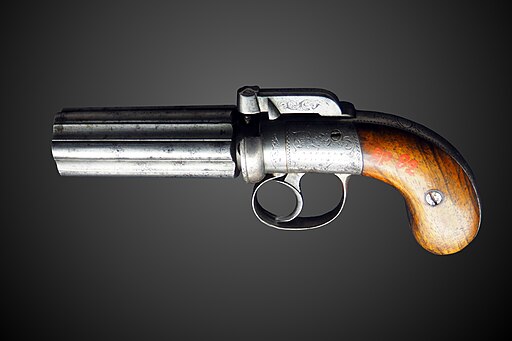 |
Especially on board a steam-powered paddlewheeler, such as the legendary Delta Queen.
Growing up in Kentucky not far from the confluence of the Tennessee, Cumberland, Ohio and Mississippi Rivers, I dreamed about someday traveling down the Mississippi River on a riverboat.
For some reason, watching the paddles spinning through the water fascinates me. The paddlewheel propels the boat forward (or backward when necessary), but what powers the huge wheel to create the motion?
Ben Campbell steamship at landing about 1850, image restored
from daguerreotype. Library of Congress archives
It turns out paddlewheels have been used to move boats for centuries, but it wasn’t until the steam engine was applied to power the wheel, in the early 1800s, that they became practical. Early versions on the Mississippi used wood, which was readily available along the river. Later, coal was used to generate the steam, but 4.5 to 14.5 tons of coal per day were required to keep their engines running.
Rivers were the “freeways” of the 1800s. Travel was faster and much more comfortable on the big riverboats than by any other means. Because of the sternwheeler's design, the Mississippi was opened to river traffic from New Orleans all the way to Minnesota. By the 1850s, hundreds of riverboats were landing in St. Paul with all types of goods and thousands of people.
On its tributaries, such as the Ohio and Missouri, cargo and passengers were carried from Pittsburgh to Cairo, and from St. Louis to Kansas City and beyond.
Passengers who wanted to get from one place to another as cheaply as possible spent their time aboard near the cargo on the main deck. Only the rich could afford a cabin on an upper deck with dining in the grand salon.
 |
| Delta Queen docked at New Orleans, 2007. Photo by Joe Ross, Lansing, Michigan, CC BY-SA 2.0 via Wikimedia Commons |
In my mind, the Delta Queen epitomizes the grandeur of luxury travel during that time. It’s the last remaining historical steamboat capable of overnight cruises, and is a National Historic Landmark.
The Delta Queen and her identical twin the Delta King – called the million dollar boats – were fabricated in Scotland and Germany and assembled in 1927 in California. She remained in California until 1948, when she was relocated to New Orleans as a tourist boat on the inland waterways.
 |
| The elegant interior of the Delta Queen, with intricately carved stair railings and grand staircase, outdid other luxury steamboats of the era. Delta Queen Steamboat Co. photo |
No expense was spared in outfitting the Delta Queen with the finest appointments, such as teak handrails, Tiffany-style stained glass, and crystal chandeliers. Throughout the boat, the fittings are brass and the posts and paneling are either oak or mahogany. She is 285 feet long, 60 feet wide and has a height of 66 feet to the top of the smokestack. There are 88 staterooms for a total of 176 passengers.
At this time (2025), the Delta Queen is undergoing a multi-million-dollar refurbishing, but when complete, the company again plans to offer three- to seven-day cruises.
At several locations along the Mississippi, Ohio, Tennessee, and Cumberland, among others, you can ride a replica of a paddlewheel steamboat. One- to two-hour sightseeing excursions, lunch or dinner cruises, and sunset cruises are typically offered. These days, most are powered by diesel fuel, not steam.
 |
| The Delta Queen features the typical red paddles of historical sternwheeler steamboats. Delta Queen Steamboat Co. photo |
 Multi-award-winning author Marie Wells Coutu finds beauty in surprising places, like undiscovered treasures, old houses, and gnarly trees. All three books in her Mended Vessels series, contemporary stories based on the lives of biblical women, have won awards in multiple contests. She is currently working on historical romances set in her native western Kentucky in the 1930s and ‘40s. An unpublished novel, Shifting Currents, placed second in the inspirational category of the nationally recognized Maggie Awards. Learn more at www.MarieWellsCoutu.com.
Multi-award-winning author Marie Wells Coutu finds beauty in surprising places, like undiscovered treasures, old houses, and gnarly trees. All three books in her Mended Vessels series, contemporary stories based on the lives of biblical women, have won awards in multiple contests. She is currently working on historical romances set in her native western Kentucky in the 1930s and ‘40s. An unpublished novel, Shifting Currents, placed second in the inspirational category of the nationally recognized Maggie Awards. Learn more at www.MarieWellsCoutu.com.































